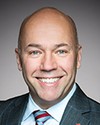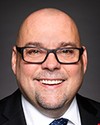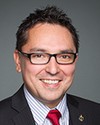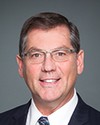One of the major issues is the availability of nursing resources. In remote and rural areas, recruitment and retention are challenges. The workload at the nursing stations is very heavy, and this makes it difficult to keep people in those positions for very long. Of course, there are people who make this their career, but it is difficult to attract new workers. Our workers also have to have solid experience, because they have to be able to offer a range of services, to meet the demand, which is very considerable. There is also the challenge of supporting these workers and connecting with the rest of the health care system. The fact that this is an enclave of health services funded by the federal government, surrounded by services for activities that are under provincial jurisdiction, is also a challenge. We have made a lot of progress in terms of integration, but this is still a major challenge.
For example, doctors come under the provincial program. Those are insured services. Our major challenge is to maintain the coherence and integration of these services. That is why the British Columbia model that I referred to is so important. That model puts all resources, responsibilities and authorities under an entity controlled by the first nations, and so the problems of jurisdiction, service integration and collaboration among the various services are eliminated. With this process, we have given the first nations full control of their services, while the province has committed to working with first nations and the federal government to act as a financial partner and a partner for resolving the issues that the system faces. Service integration is probably the second major issue.
The third major issue is mental health. Your colleague referred to this earlier. It is a challenge. The need is growing, and is largely a result of historical situations that have affected the communities. There are also new needs, such as those related to the abuse of prescription drugs. These kinds of challenges have an enormous impact on the communities, and, more specifically, on the most vulnerable communities. There are very urgent situations. This becomes a problem for health services, in that additional pressure is put on those services. It can have the effect of creating demands that did not exist before. In these circumstances, we have to provide additional services and we have programs that enable us to do that. The work with first nations and Inuit on defining strategies is extremely important. We do have to do that, and we have to do it from a culturally responsible perspective. We have to rebuild what was destroyed by the colonization model that was applied for over a century. We have to make culture central to our actions and respect the autonomy of the first nations, but that must be done one step at a time. Another challenge is building capacity in the organizations and communities.
Some communities have very sophisticated plans that enable them to take charge of programs and adapt them to meet their needs. We have to look after human resources and attract workers to these communities who want to stay and contribute to those plans. In some communities, we are seeing extremely important situations and major progress being made. What we often see in the media are the challenges, and we have to pay attention and work in the places where there are special challenges. There really are places where extraordinary progress has been made, where there is creativity and the first nations have taken control of their health services and are designing intervention plans and models that very much merit attention.





